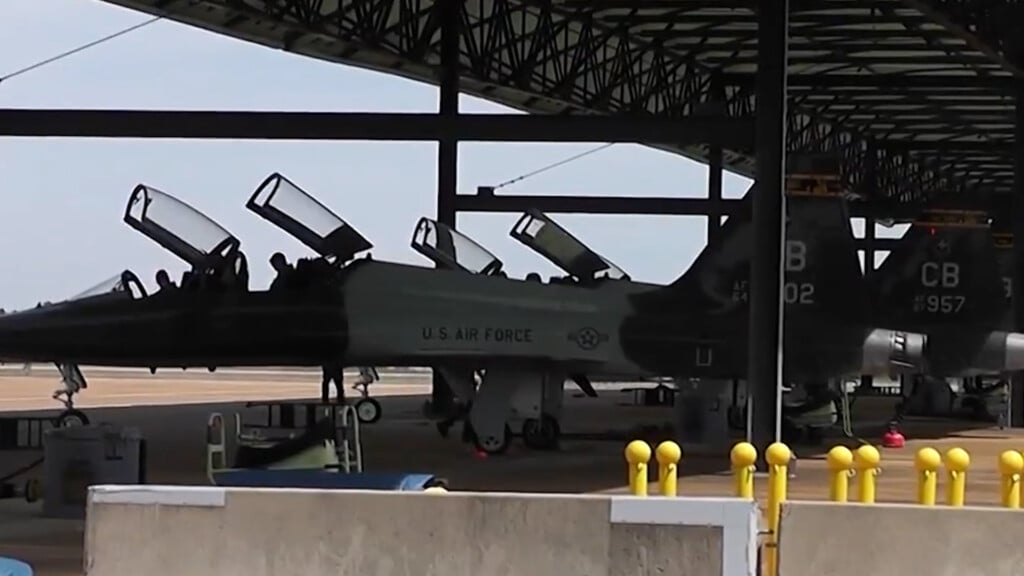Video: Air Traffic Control Tower Closings Delayed
[bitsontherun 4RBTUU0I]
By Joan Lowy/The Associated Press
WASHINGTON — The closings of control towers at 149 small airports, due to begin this weekend because of government-wide spending cuts, are being delayed until June 15, federal regulators announced Friday.
The Federal Aviation Administration said it needs more time to deal with legal challenges to the closures. Tupelo Airport’s tower was among those set to close in May.
Also, about 50 airport authorities and other “stakeholders” have indicated they want to fund the operations of the towers themselves rather than see them shut down, and more time will be needed to work out those plans, the agency said in a statement.
The first 24 tower closures were scheduled to begin Sunday, with the rest coming over the next few weeks. Obama administration officials have said the closures are necessary to accomplish government-wide automatic spending cuts required by Congress.
Despite the delay, the FAA said all 149 of the airport towers, which are operated by private contractors for the agency, will be shut down or turned over to local authorities on June 15. The new schedule is to implement the shutdowns at once, rather than a gradual phase-in as had been planned.
The U.S. Contract Tower Association, which represents the companies that operate contract towers, has challenged the closures in federal court. “The administration has decided to make tower closures the poster child of sequestration (automatic spending cuts),” said the group’s director, J. Spencer Dickerson. “We believe there are other ways they could have skinned this cat.”
Federal officials have insisted that the closures wouldn’t affect safety. And there is evidence that with improving safety, some of the closures would make economic sense.
It turns out that the FAA has been using 30-year-old data on aircraft collisions to justify the cost of operating many of the control towers, even though accident rates have improved significantly over that time.
Had the FAA used more current data, it’s probable that some low-traffic airport towers operated by private contractors would no longer have met the agency’s criteria for funding, industry officials say. But the FAA has long been under pressure from members of Congress to open new towers at airports in their states, not to close them.
The FAA began paying contractors to staff and operate towers at a handful of small airports after President Ronald Reagan fired striking air traffic controllers in 1981. Today, there are 251 towers operated by private contractors at airports across the country at an average annual cost of more than $500,000 each.
The shutdown decision is unrelated to the FAA’s use of obsolete safety data to justify the contract tower program.
In 1990, the FAA developed a complicated cost-benefit methodology for the tower program that relies on accident data from 1983 to 1986 to determine how many accidents would be averted and lives saved if an airport had controllers working onsite. The safety data have never been updated, despite marked improvements in accident rates.
In 1983, there were 10.7 accidents for every 100,000 departures involving small planes, business jets and other non-airline flights in the U.S., according to the National Transportation Safety Board. By 2011, the latest year for which figures are available, that rate had dropped to 6.5 accidents per 100,000 departures. The commercial airline accident rate dropped from 0.42 per 100,000 departures to 0.34 per 100,000 over the same period. And fatalities have declined even more. There have been no passenger airline fatalities in the U.S. in more than four years, the longest period without fatalities since the dawn of the jet age half a century ago.
“None of the formulas have been updated since 1990, despite a very significant change in the aviation operating environment and the general aviation and commercial accident rates,” the FAA said in a statement Thursday in response to questions from The Associated Press. “The FAA is in the process of updating this policy.”
Agency officials offered no explanation for the oversight.
“The FAA methodology likely overestimates present-day collisions,” the Congressional Research Service said in a recent report.
Initially the cost-benefit ratios were to be recalculated every two years, but that didn’t happen, said David A. Byers, an aviation professor at the University of Nebraska at Omaha and a consultant to the companies that operate the towers. If they were recalculated now, some airports would certainly fall below the FAA threshold for funding, he said.
Of the nation’s 5,000 public airports, only about 10 percent have control towers. Those without towers generally have relatively few flights, and pilots coordinate takeoffs and landings among themselves.
Airport towers are prized by local communities as economic boosters, particularly in rural areas. Airlines are sometimes reluctant to schedule flights to airports where there are no on-site air traffic controllers.
Former Rep. James Oberstar, D-Minn., a critic of the contract tower program, said he refused to allow lawmakers to insert provisions into bills requiring the FAA to pay for new control towers at airports in their districts when he was chairman of the House Transportation and Infrastructure Committee.
“We couldn’t always stop it in all instances in the appropriations process, particularly when a bill comes from the Senate and it has a designation of funding for a particular tower,” Oberstar said.
Next week, Sen. Jerry Moran, R-Kan. and Sen. Richard Blumenthal, D-Conn., plan to introduce a bill to require the FAA to resume operations at the 24 towers that were scheduled for closure on Sunday and to prohibit the agency from shutting down any more towers after that.
___
Online:
FAA airport contract tower closure list: http://www.faa.gov/news/media/fct_closed.pdf





Leave a Reply